Koh Samui
Koh Samui was paradise. Then people from all over the world came and took what they liked: the beaches, the sea, the palm trees, the people. What remains is a conquered island, still beautiful and rich in nature, but clearly marked by the phenomenon of package tourism.
Pictures taken in the early 90s show Chris as a toddler playing on the beach. In the background are dense palm forests that almost reach the water. A few rickety beach loungers, virtually no tourists. The island has changed a lot since then.
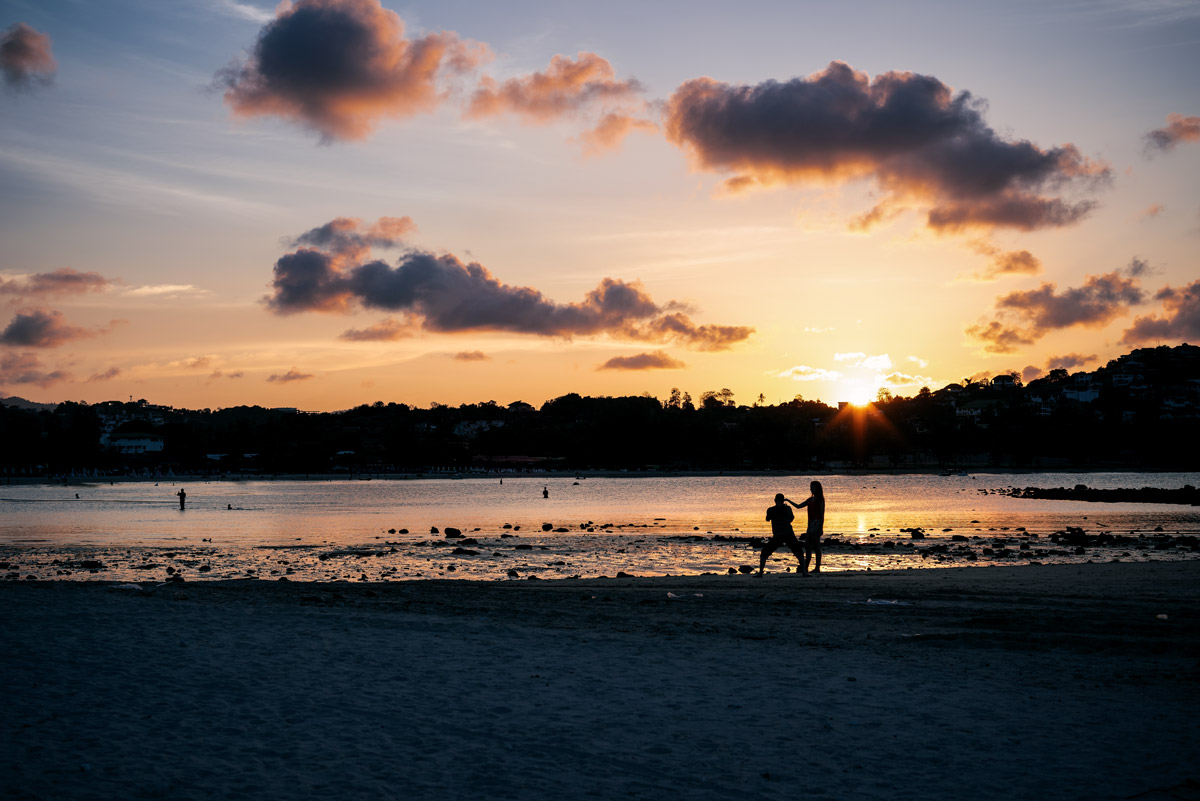
An international airport with a busy flight schedule. An escalating waste problem. Deforestation, climate adaptation and water pollution. Problems that a quick look behind the dream facade reveals. The idyllic palm groves on the beach from memory – a relic of the past almost everywhere. The “tourism” sector of the economy grew, but as is almost always the case in such circumstances, the prosperity of the population did not grow in equal measure.
Koh Samui offers exactly what tourists are looking for: Accommodation by the water. Reasonable prices. An abundance of restaurants, food and supermarkets. Convenient accessibility. An orderly, tamed nature that offers no risks or dangers. All it takes is the daily walk from the breakfast room to the beach lounger – a smile, no garbage please, individually wrapped butter and three showers, because the sweat runs incessantly from your pores. There are easy girls around the corner. The big picture on the outside is of no interest.
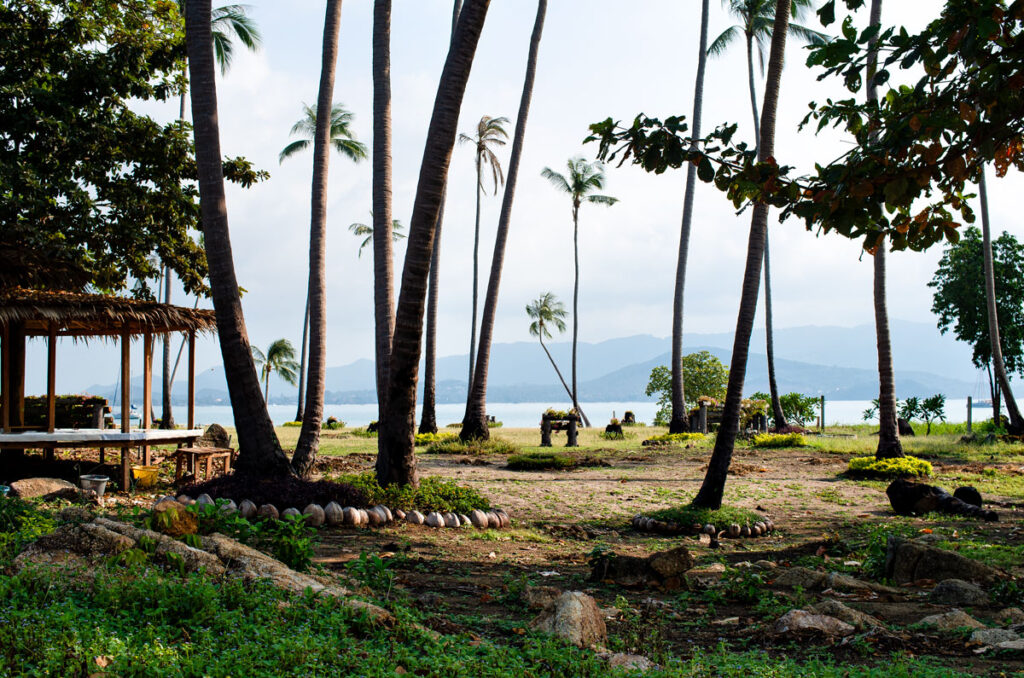
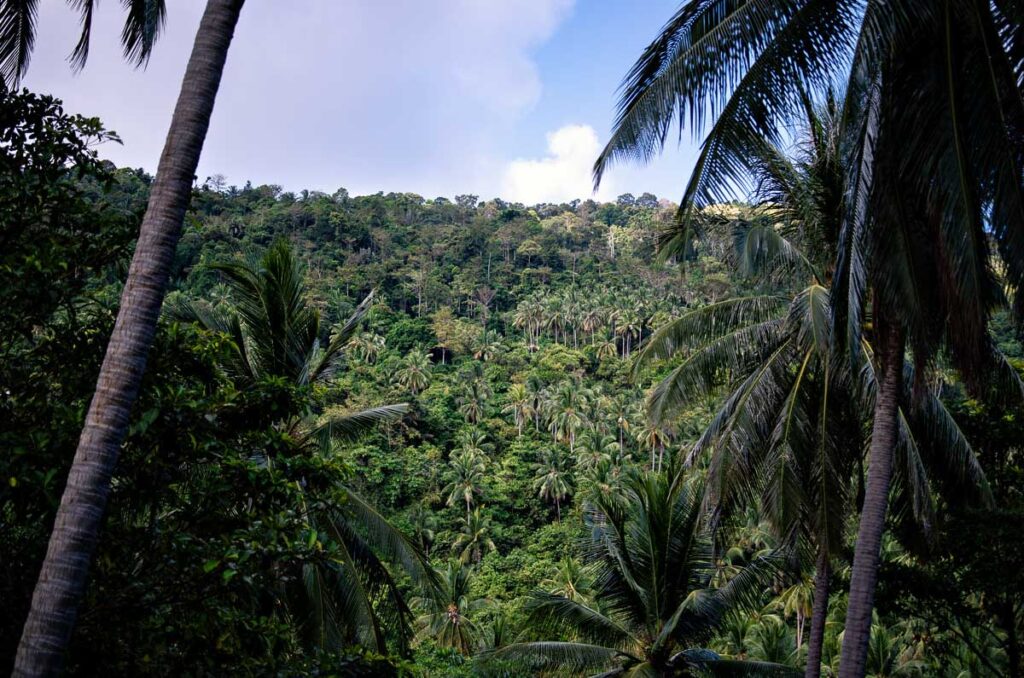
Yes, Koh Samui and its surrounding islands remain dream destinations for stressed-out Central Europeans and heat-loving families. But it is places like Koh Samui, Sharm El-Sheikh, Antalya and even Mallorca that have democratized travel and made it affordable. Everyone can enjoy the sun, beach and palm trees, everyone can imagine they are in paradise for a moment.
People from all over the world travel to the “Big Buddha”, take photos, take selfies. The planes taking off from the nearby airport roar overhead. Tourists circumnavigate the islands on scooters, squeeze into shared cabs and share the beaches. They celebrate themselves and life at the legendary Full Moon parties on Koh Phangan. They forget everyday life and everything that lies behind them. Koh Samui is an illusion. But tourism – travel in general – is always an illusion.
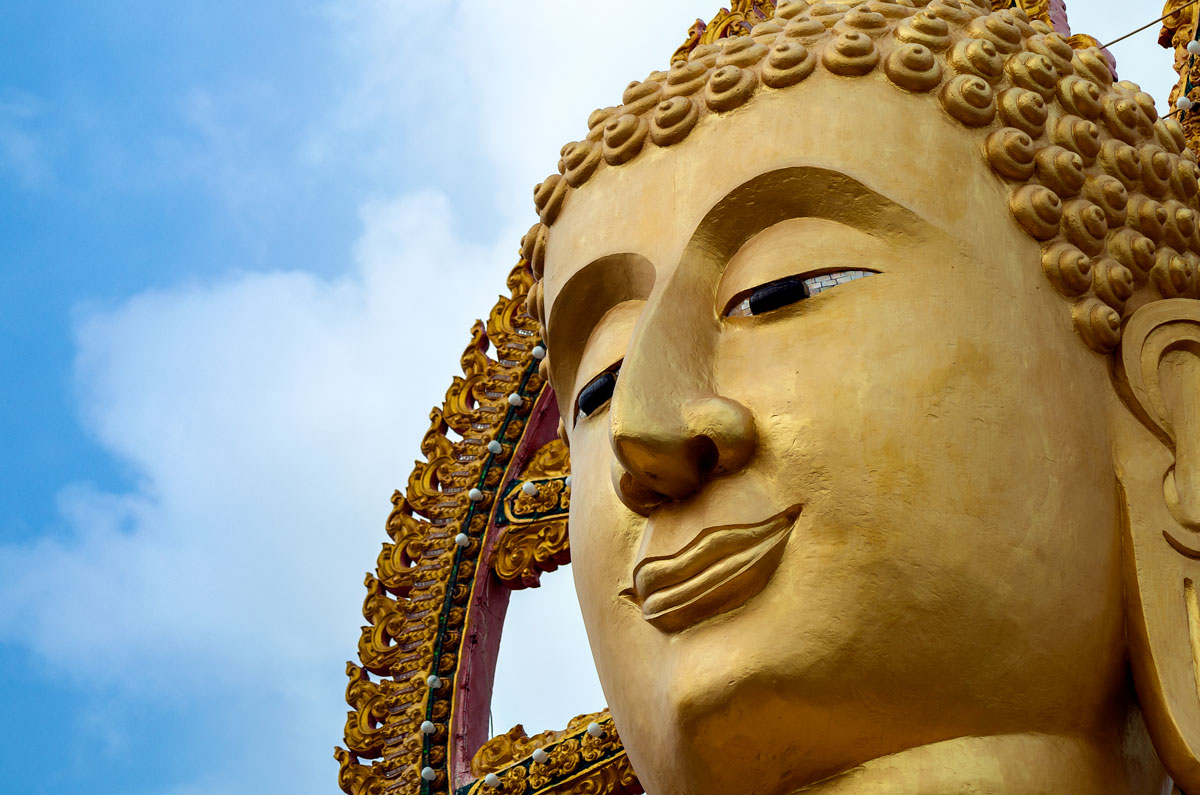
We jump into the warm sea off Koh Phangan and swim over to the shore. We have taken the sailing boat to a more remote part of the island, and it is low season. So there’s not too much going on.
A walk on the beach, an ice-cold coconut, drying off in the sun and waiting for dusk to fall. The sky turns dark blue, orange and red stripes, a little pink. Fishing boats anchor off the coast. Their green lights magically attract squids. From a nearby bar we hear the clinking of glasses, laughter and an overdriven music system. We sit on the still-warm sand, with the open sea in front of us and the island behind us.
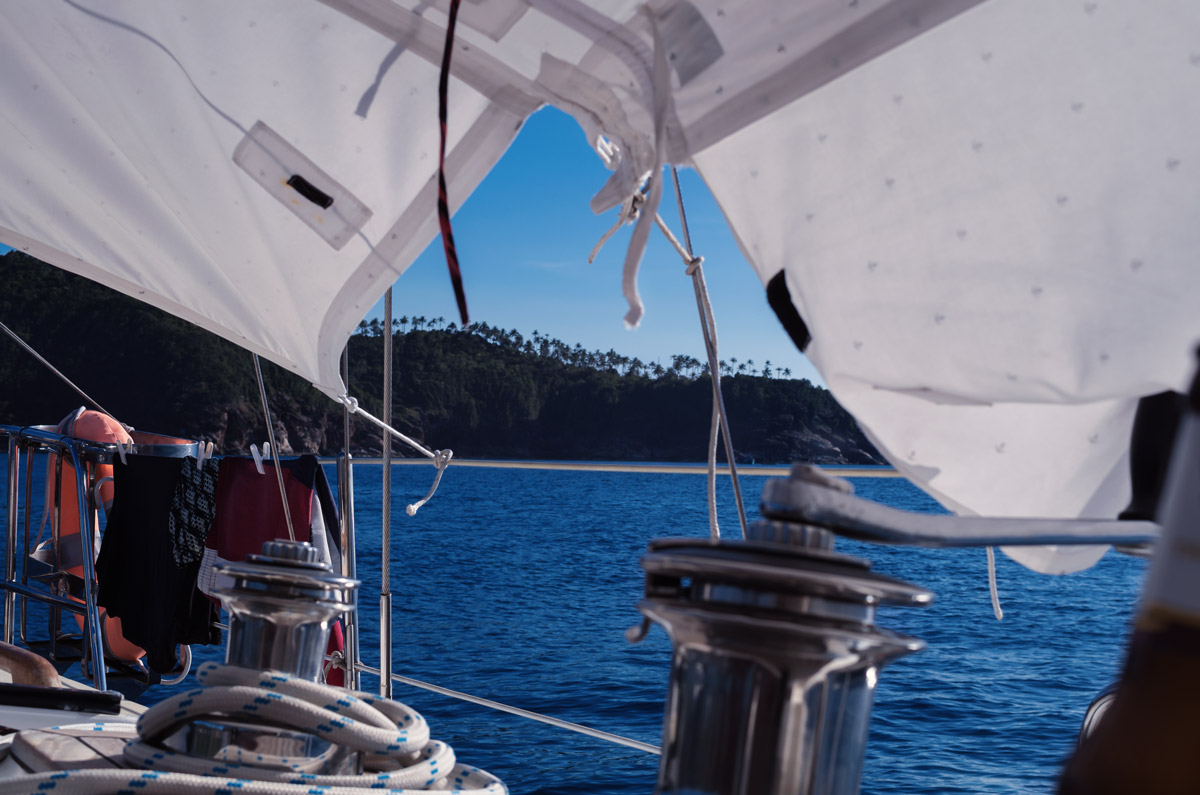
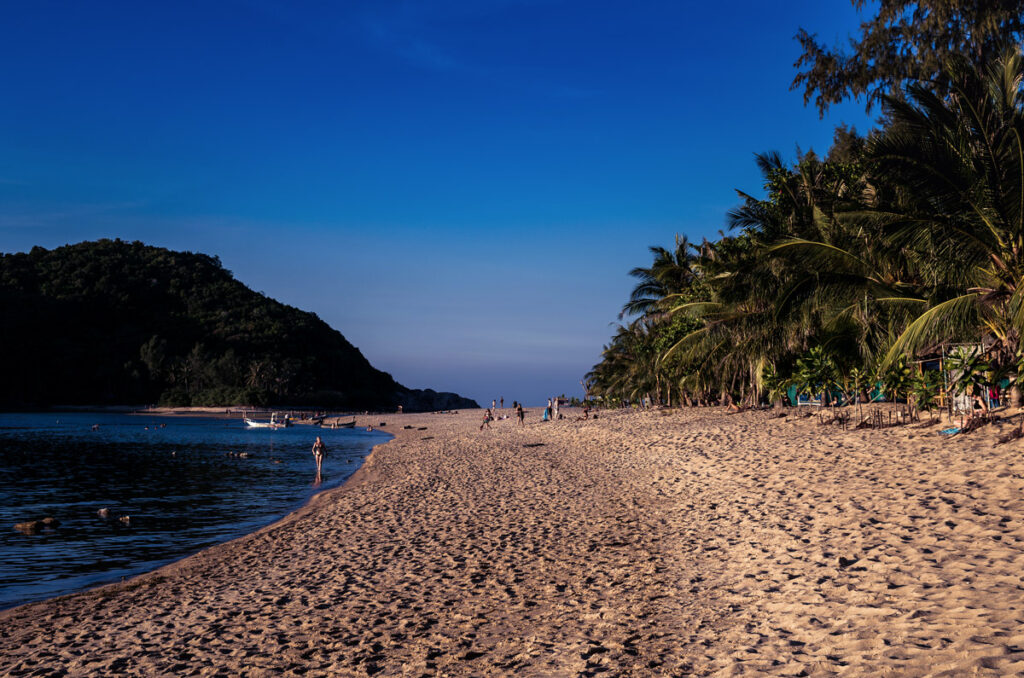
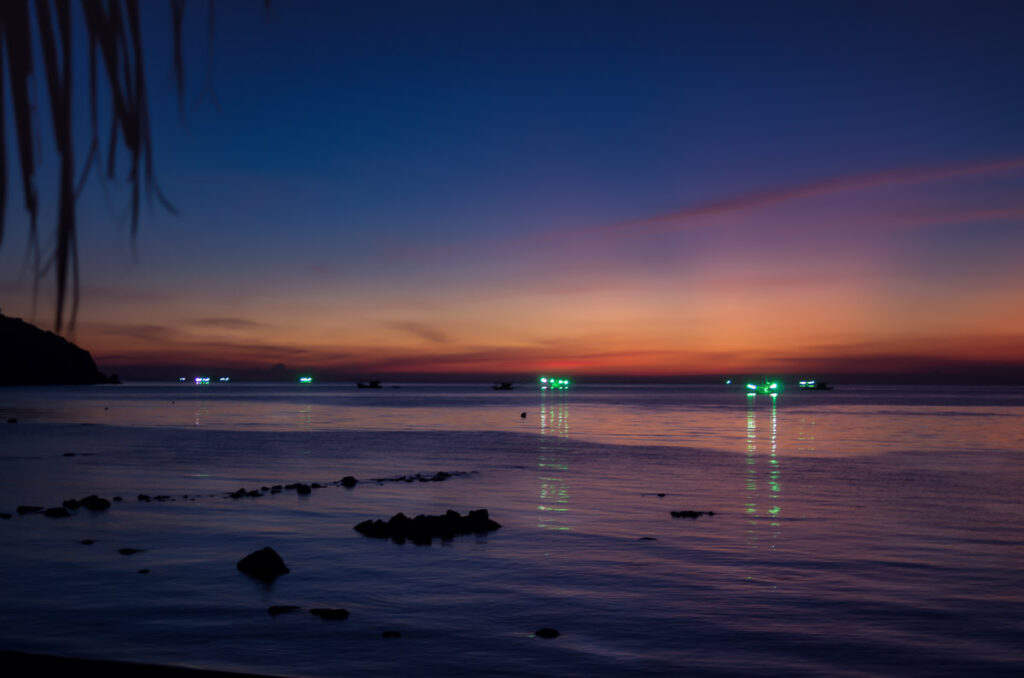
We have been to Koh Samui several times, in different years and decades. We came by bus, ferry, our own car, by plane. We brought money, supported restaurant operators, service staff, hotels, scooter rental companies with our presence … But we were also part of the problem. We are a curse and a blessing, like every tourist. You could find a positive approach: Who benefits from paradise if not people? Shouldn’t we all be allowed to share in the beauty of the world?
But you could also take a critical approach. We destroy what we want to see by seeing it. Slowly, but steadily. Humanity is growing. The number of travelers is increasing, but not the size of the world. Resources are finite.
Info about our trip
No question: Koh Samui is beautiful and worth it. Chris visited the island several times as a child and later we went there together. The government is trying to preserve the island’s charm by, for example, banning multi-storey hotel complexes (no building may be taller than a palm tree). You can still find everything on Koh Samui: quiet corners, jungle, waterfalls, trekking, partying, crowded beaches, bars and, of course, sex for money. The tourist infrastructure is therefore well developed. How long you stay on Koh Samui depends on your wishes. Some people spend two weeks on the beach every day, others a month. If you want to explore the island a little and relax by the sea, seven to ten days is ideal.
We always try to implement the following advice in towns or regions that are threatened by over-tourism:
- Stay in smaller, owner-run guesthouses or B&Bs
- Reduce waste and use resources sparingly
- Choose an ecological form of travel
- Don’t play the stingy tourist
- Also visit places of interest that are a little off the beaten track
- Leave at least one positive impact (pick up litter, donate something, buy a high-quality souvenir, make a friend)
All of these points are relatively easy to implement and will allow you to have a unique vacation that will benefit your travel region.
On Koh Samui you will find a great range of restaurants and hotels. From simple and cheap to expensive and luxurious. The clientele is correspondingly broad. Backpackers, families, city dwellers who want to relax on the island and long-term vacationers all come together here.
Our last stay on Koh Samui was in 2018. During the day we were often out and about and ate something on the street and in the evening in smaller restaurants. We don’t have any specific recommendations – go out and try 🙂
The main places are Bo Phut and Chaweng Beach. This is where the hotels and tourists congregate. Things are quieter in the west and south of the island. Lamai in the south-east is the perfect compromise between a relaxed atmosphere and a good tourist offer. This would be our first choice for a “base camp” lasting several days.
Koh Samui has very touristy corners with red light districts and bars. It goes without saying that caution should be exercised here. The Full Moon parties on Koh Phangan in particular are always in the news for abuse of the narcotics law, rape or violent crime. It is best to remove the Full Moon Party from your list of places to visit. Not only because of the crime there, but also because of the negative impact on the environment and local population.
Thai society is very open-hearted and fond of children. It was not uncommon to see a bunch of Thais (mainly women) standing around our boy. The way Thais treat children is different to what we are used to in Europe. We would never go up to a stranger’s child and want to take it in our arms. This happens all the time in Thailand – people don’t even ask beforehand. You should also be prepared for Thais to take photos of your children – often without being asked. They will quickly whip out their smartphone and take a selfie with the blond, little farang (foreigner). Think about how you want to deal with this – from our Western perspective – cross-border behavior. You won’t always be able to prevent it. Be respectful and smile and let your counterpart know that you would like a little more distance. At the same time, you are even more welcome everywhere with children and we were often given preferential treatment (e.g. in queues).
However, don’t expect extra changing rooms anywhere – the sanitary facilities are often in an inadequate condition anyway. So take wet wipes and disinfectant gel with you. You can buy basic baby supplies in any 7/11 or supermarket. Diapers are not cheap and are often only available in large packs. It’s best to leave the baby carriage/stroller at home. The sidewalks are usually too bad and there are too many pedestrians and cars, especially in Bangkok, so you won’t have much fun with it. The most flexible option is a baby carrier.
A convenient way to get to Koh Samui is by night bus or train from Bangkok to Surat Thani. From there you can take the ferry across to the island. The airport on Koh Samui is also available, but sometimes a flight to Surat Thani on the mainland is considerably cheaper. On the island, simply hop on one of the shared cabs, which either travel in a circle or shuttle back and forth between two points. Once you are close to your hotel, ring the bell and the driver will stop to let you off. Once you’re there, it’s best to hire a scooter to explore the island.
- A very good introduction to Thailand’s history in general can be found in Thailand’s Political History: From the 13th Century to Recent Times by B. J. Terwiel
